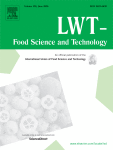Ver ítem
- xmlui.general.dspace_homeCentros Regionales y EEAsCentro Regional Mendoza - San JuanEEA MendozaArtículos científicosxmlui.ArtifactBrowser.ItemViewer.trail
- Inicio
- Centros Regionales y EEAs
- Centro Regional Mendoza - San Juan
- EEA Mendoza
- Artículos científicos
- Ver ítem
Effect of low temperature fermentation on the yeast-derived volatile aroma composition and sensory profile in Merlot wines
Resumen
Different winemaking practices have been tried to improve wine quality and differentiate wine styles. Low temperature fermentation has been proposed to enhance the aroma profile in young red wines. The aim of this work was to study how fermentation temperature affects the chemical composition, the concentration of yeast-derived volatile aroma compounds and the overall quality of young red wines. Thermomacerated Merlot grape must was fermented at 15 °C and
[ver mas...]
Different winemaking practices have been tried to improve wine quality and differentiate wine styles. Low temperature fermentation has been proposed to enhance the aroma profile in young red wines. The aim of this work was to study how fermentation temperature affects the chemical composition, the concentration of yeast-derived volatile aroma compounds and the overall quality of young red wines. Thermomacerated Merlot grape must was fermented at 15 °C and 25 °C using five different Saccharomyces cerevisiae strains. Wines fermented at 15 °C displayed higher ethanol concentration, whereas differences in volatile acidity and colour were more related to the yeast strain used than the fermentation temperature. Sensory analysis could discriminate the wines fermented at two temperatures for each yeast tested. Low temperature fermentation produced wines with higher ester and lower terpene content compared to fermentation at 25 °C, whereas the fatty acids and higher alcohol concentraions were more associated to the yeast strain employed. In general, wines produced at low temperature were perceived as more aromatic, although this effect was strain-dependent. In summary, we were able to obtain red wines whit improved organoleptic characteristics, by combining thermomaceration and low temperature fermentation with cold adapted autochthonous yeast strains.
[Cerrar]

Fuente
LWT - Food Science and Technology 142 : 111069 (May 2021)
Fecha
2021-02
Editorial
Elsevier
ISSN
0023-6438
Documentos Relacionados
Formato
pdf
Tipo de documento
artículo
Proyectos
(ver más)
INTA/PNAIyAV-1130032/AR./Tecnologías de transformación de alimentos.
INTA/2019-PE-E7-I150-001/2019-PE-E7-I150-001/AR./Aprovechamiento de residuos, descartes y subproductos agroalimentarios y agropecuarios: tecnologías para la obtención de alimentos y bioproductos para cadenas productivas
Palabras Claves
Derechos de acceso
Restringido
 Excepto donde se diga explicitamente, este item se publica bajo la siguiente descripción: Creative Commons Attribution-NonCommercial-ShareAlike 2.5 Unported (CC BY-NC-SA 2.5)
Excepto donde se diga explicitamente, este item se publica bajo la siguiente descripción: Creative Commons Attribution-NonCommercial-ShareAlike 2.5 Unported (CC BY-NC-SA 2.5)

